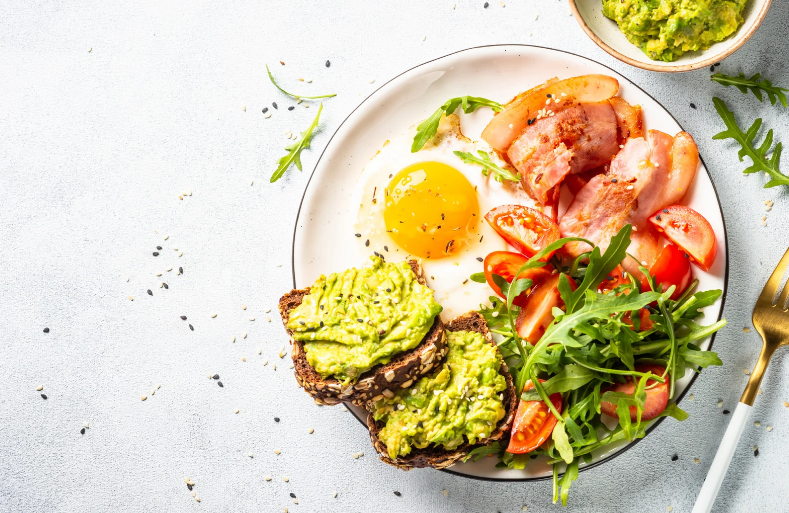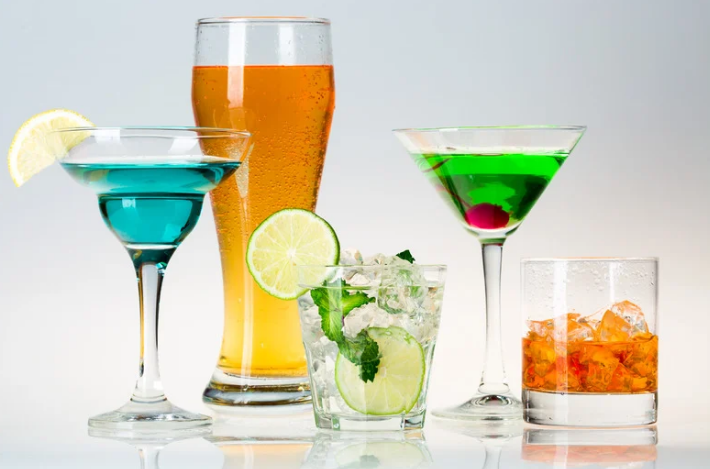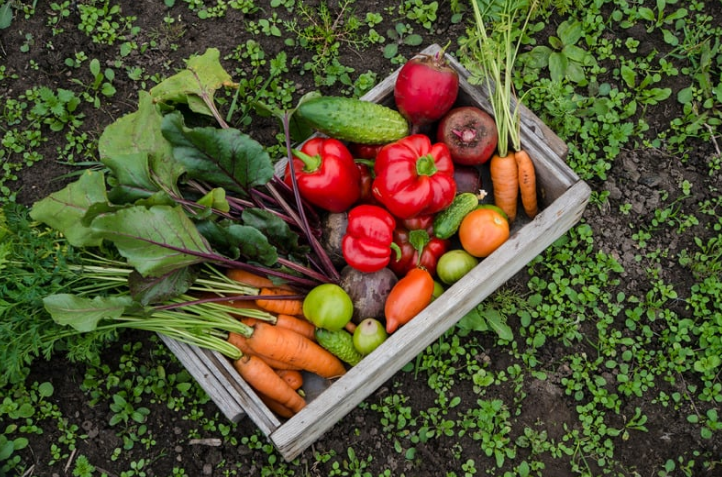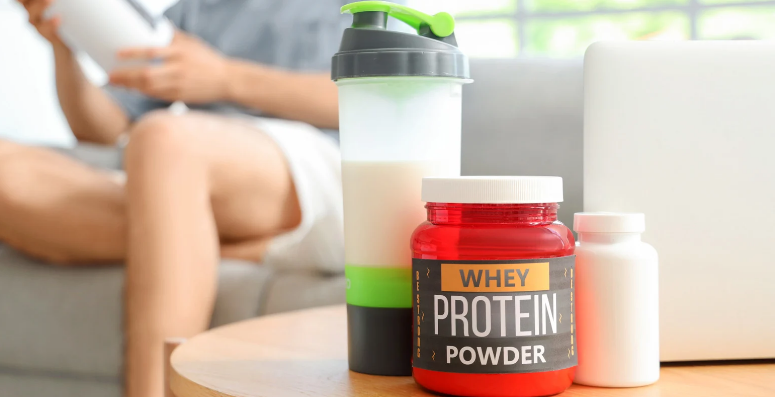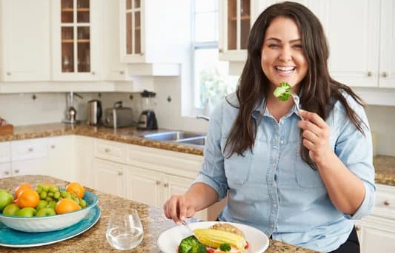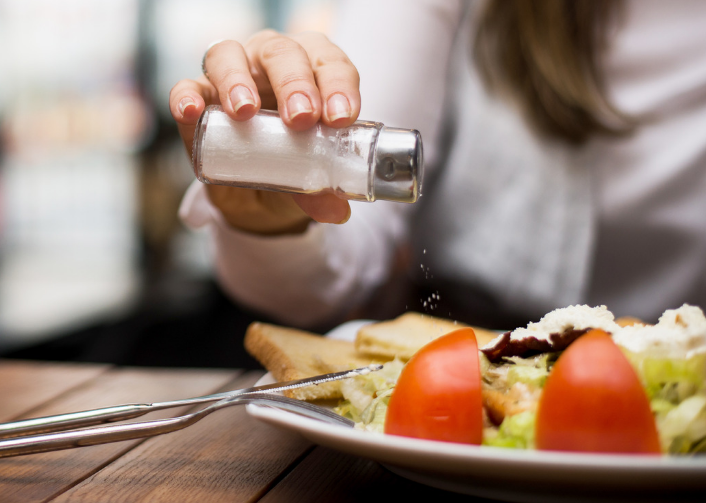Did last night's dinner derail all the hard work from your morning workout? Put an end to unnecessary roadblocks by educating yourself on the notorious culinary culprits, ID’d by expert dietitians and nutritionists.
1. Smoothie Bowls
These blended bowls may seem like a convenient (and Insta-worthy) way to amp up your fruit and veggie intake, but registered dietitian nutritionist Mandy Enright warns they can quickly send your calorie count skyrocketing. "These bowls can pack in a lot of calories and added sugars from what’s being mixed in, plus toppings," says Enright.
Plus, the blending process itself could make smoothie bowls less than ideal for those trying to lose weight. "When we blend food, we break down the fiber that is crucial to maintaining fullness, which means you could get hungry sooner," she says. "Also, fiber slows down how quickly we can absorb sugars, which is preferred, especially for those looking to lose weight."
Smart swap: Instead of a blended bowl, try making a bowl with the whole fruit itself. Enright also suggests topping it with a healthy protein source, such as yogurt or cottage cheese. For even more protein and an extra fiber boost, add a sprinkling of hemp, chia or flax seeds.
2. Bagels
They may be a better choice than sugary donuts, but that doesn't mean bagels get to wear the healthy food hat. According to registered dietitian Alissa Rumsey, one bagel contains a large amount of refined carbohydrates—roughly the equivalent of four slices of bread.
"Refined carbohydrates digest quickly, cause a rapid blood sugar increase and can trigger a spike in insulin," says Rumsey. "Insulin is a storage hormone, so when a lot is released it ends up storing most of those calories as fat. Plus, since they digest quickly, they don't keep you full for long, so it's easier to overeat."
Smart swap: Substitute half of a whole-wheat bagel, which gives you a more sensible portion size of carbohydrates along with a few grams of slow-digesting fiber. Try pairing the bagel with protein and a little fat, like smoked salmon, avocado and tomato slices. The protein and fat will help to slow down digestion, preventing a large blood sugar spike and keeping you satiated until your next meal.
3. Creamy Dressing
Salads may seem like a sensible choice, but all those leafy green benefits can easily be drowned out by creamy dressings packed with calories and hidden sugar. And if you think you’re off the hook by opting for low-fat or light versions, think again. Nutrition expert Toby Amidor warns that many of them contain a laundry list of added ingredients that may not be the best choice to put in your body.
Smart swap: Consider making your own creamy dressing that goes lighter on calories without sacrificing great taste. Amidor's cookbook, "The Greek Yogurt Kitchen," includes several yogurt-based dressings that blend small amounts of high-calorie ingredients along with a few herbs and spices. One recipe, for example, calls for just a single ounce of blue cheese for four servings to keep the calories under control but ensure the dressing is still bursting with flavor.
4. Packaged Gluten-Free Snacks
Many people assume that if a food is labeled as gluten-free that it's automatically lower in calories, fat and sugar, but Amer says it's often quite the contrary. "Gluten-free products often contain additives, extra sugar and fat—and therefore calories—to try and emulate the texture and flavor of gluten-containing products," she says.
Smart swap: Instead of gluten-free chips, pretzels and other packaged snacks, Amer suggests choosing foods that are less processed and as close to their natural state as possible, including whole grains (gluten-free or not) like quinoa, oats and sprouted grain bread.
5. Processed "Low-Fat" Foods
Lorraine Miano, holistic health coach, cautions her clients against falling for the low-fat marketing hype. "When the food industry decided that saturated fats were bad for us, they started adding unsaturated vegetable oils in their place," she says. "We now know that these partially hydrogenated oils lead to an increase of dangerous trans fats, which are bad for our cholesterol and heart health. If this wasn't bad enough, they also began increasing the amounts of sugar in these products to make them more palatable." This could cause a low-fat product to become high in simple carbs, which leads to blood sugar swings and cravings—not an advantage when you're attempting to lose weight.
Smart swap: Registered dietitian Becky Hand recommends choosing raw veggies dipped in low-calorie ranch, part-skim mozzarella cheese sticks wrapped in lettuce or cabbage leaves, or air-popped or low-calorie microwave popcorn sprinkled with a little seasoning salt or Parmesan cheese.
6. Peanut Butter and Almond Nut Butters
Although nut butters are a good source of healthy fats and can have some unexpected benefits, they're also very high in calories. Registered dietitian Ilana Muhlstein advises eating them one small spoonful at a time, rather than slathering several tablespoons worth on a slice of bread—which can seem next to impossible when cravings are in full force.
Smart swap: Want to enjoy the flavor of peanut butter flavor and still stay on track with your slim-down goals? Muhlstein recommends trying powdered peanut butter, which can be found in almost any market these days. "It's so low in fat and calories, but high in protein and flavor," she says. "I like to whip some up with plain, nonfat Greek yogurt and make a peanut butter mousse, or dip it with fresh, juicy strawberries." Hummus also serves as a lower-calorie stand-in for peanut butter.
Losing weight and living a healthier lifestyle doesn't have to mean giving up all the foods you love, but a few adjustments could do wonders in ramping up your results. If you suspect that any of these options might be wrecking your weight loss, call on a few smart swaps and see what a world of difference the right plate can make.







